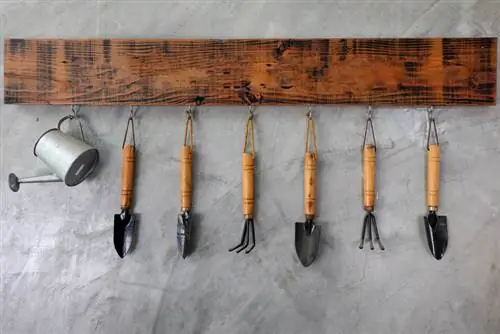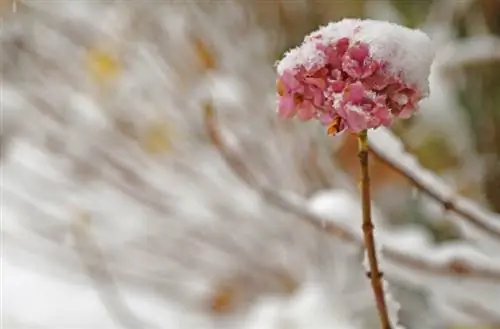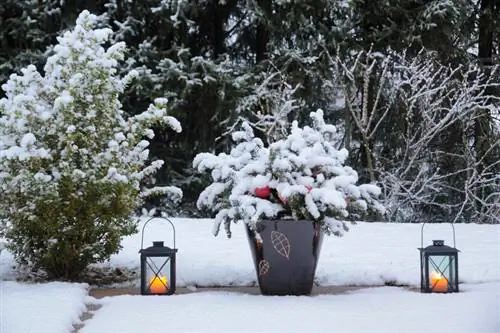- Author admin [email protected].
- Public 2023-12-16 16:46.
- Last modified 2025-01-23 11:21.
Especially in the last, slightly warmer days of autumn, we garden owners always think of a lot of things that could be done in and around the beds so that everything will be even more beautiful next year. Here are a few more bulbs from the spring bloomers, a raised bed should actually have been created a few weeks ago and oh dear, the roses have to be piled up quickly before the impending frosty nights.

Then the first snow will soon come and, as in the many years before, the realization: once again no one has thought of the tools, quickly into the shed, lock the bolts and the rest will happen at some point. It just won't, if we don't get started right away and implement at least some of the following tips.
How to get garden tools ready for winter?
To winterize garden tools, clean and maintain hand tools, protect garden hoses and pumps from freezing, and clean, maintain and drain fuel on motorized equipment such as lawn mowers.
Clean, maintain and store the hand tools
Hoes, rakes, spades, scythes and shovels are first removed from the last clumps of dirt. An old tub filled with lukewarm water and a hand brush will help. Splinters on handles and other wooden parts can be removed once the devices are dry again. If it doesn't sit firmly on the handle and wobbles, it's best to attach it securely again straight away. For the rusty spots on metal surfaces, you first need sandpaper (€7.00 on Amazon) or a wire brush and then an anti-corrosion agent. For wooden parts, treating them with linseed oil has proven useful if the handles and handles do not need to be touched in the next few days. These garden tools should be kept as dry and dust-free as possible over the winter. Hanging on a wall of the garden shed or in a tool cupboard is ideal.
Garden hoses, pumps and water containers don't like frost
Irrigation systems that are underground and neither are water pipes. Therefore, the entire water supply can now be turned off and completely emptied to protect it from possible bursting. Plastic water hoses are quite sensitive at temperatures below zero and, to be on the safe side, are placed in a larger potato sack or covered with a warming tarpaulin. Autumn is also a good opportunity to remove all foreign objects and mud that have accumulated over the months from the now emptied rainwater tank (after it is dry inside).
Lawnmowers and electrical appliances
For motor-driven and slightly larger garden tools, a thorough cleaning is required first before the corresponding corrosion or wood protection work can be carried out. Afterwards, it helps to take a look at the manual, as the manufacturer often recommends additional anti-freeze measures, such as draining the fuel. The lawn mower, which has to do the hard work in most allotments over the summer, is sometimes treated rather neglectfully. Even if you want to use yours later for leaf removal or a final clearing, at least give it a little inspection now:
- Clean the garden dirt from the blades and housing thoroughly using a spatula, brush and plenty of water.
- Check the mower blades for cracks and notches, either sharpen or change blunt blades yourself or commission a garden service to carry out the maintenance.
- For mowers with combustion engines, check the oil level or, when it's time, carry out a complete oil change including replacing the filters.
- It's better to drain the fuel completely so that the engine starts better next spring and no condensation builds up in the tank. Then start the mower again briefly until the last drop of fuel is used up.






